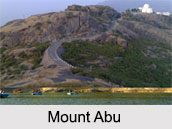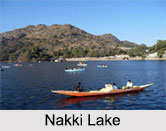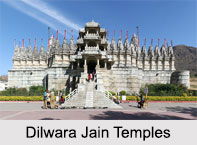 Mount Abu, Rajasthan is the sole hill station of the state, which is placed in the core of a piece of land, which is elevated to a height of 1220 meters. The green oasis of Mount Abu, Rajasthan has earned a seat of significance amongst other hill stations that have flourished in the entire nation. Legends are popular about the origination of Mount Abu, Rajasthan.
Mount Abu, Rajasthan is the sole hill station of the state, which is placed in the core of a piece of land, which is elevated to a height of 1220 meters. The green oasis of Mount Abu, Rajasthan has earned a seat of significance amongst other hill stations that have flourished in the entire nation. Legends are popular about the origination of Mount Abu, Rajasthan.
Etymology of Mount Abu
The name has its derivation from Arbuda. Arbuda is a powerful snake who once had saved Nandi from a `chasm`. Nandi is the holy bull of Lord Shiva. Also Mount Abu, Rajasthan is a home of holy person and sages. Another legend says that most popular Vaishistha Muni had created 4 `agnikula Rajput clans` from a fire-pit by performing a `yagna` or fire sacrifice. In this way he rescued the Mother earth from the clutches of the evils. Yagna was conducted besides natural spring, which is located just below Mount Abu, Rajsthan.
History of Mount Abu
The earliest name of Mount Abu is Arbudaanchal. In the Puranas, the area has been referred to as Arbudaranya and `Abu` is a diminutive of this ancient name. It is believed that sage Vashistha retired to the southern spur at Mount Abu following his differences with sage Vishvamitra.
 The conquest of Mount Abu in 1311 CE by Rao Lumba of Deora-Chauhan dynasty brought to an end the reign of the Parmars and marked the decline of Mount Abu. He shifted the capital city to Chandravati in the plains. After the destruction of Chandravati in 1405, Rao Shasmal made Sirohi his headquarters. Later it was leased by the British government from the then Maharaja of Sirohi for use as the headquarters.
The conquest of Mount Abu in 1311 CE by Rao Lumba of Deora-Chauhan dynasty brought to an end the reign of the Parmars and marked the decline of Mount Abu. He shifted the capital city to Chandravati in the plains. After the destruction of Chandravati in 1405, Rao Shasmal made Sirohi his headquarters. Later it was leased by the British government from the then Maharaja of Sirohi for use as the headquarters.
Climate of Mount Abu
Summer lives from mid-April to mid-June and the nights are unpleasantly cold.
Location of Mount Abu
Mount Abu is the only hill station in Rajasthan; it is situated 1,722 metres above sea level and is located amidst the lush green hills on the highest end of the Aravallis range.
Attractions of Mount Abu
Mount Abu is a great tourist destination, a hill station with the typical mix together of the flavours of Rajasthan. Following are the places to visit in Mount Abu:
Guru Shikar: Guru Shikar is the highest point in mount Abu. It is wonderful to get a panoramic sight of the entire province and is well-known for its temple of Guru Dattatreya.
Dilwara Jain Temples: Dilwara Jain temples are situated at a distance of just 2.5 kilometres. Brilliant use of marble in the architecture and the decorative carvings and the perfect stone laying technique make it one in the middle of the most beautiful pilgrimage spots in the world. The temple compound consists of 5 temples which are exceptional to the Jain culture in India specifically Vimal Vasahi, Luna Vasahi, Pithalhar, Parshvanath and Mahavir Swami.
Achalgarh Fort: The fort was recreated in 1452 by Maharana Kumbha the leader of the Mewar kingdom and was renamed as `Achalgarh` or the permanent. The fort yet stands in ruins to this day.
 Nakki Lake: Nakki Lake is an ancient and sacred lake. The lake is also well-known as Mahatma Gandhi"s ruins were engrossed here leading to the structure of Gandhi Ghat.
Nakki Lake: Nakki Lake is an ancient and sacred lake. The lake is also well-known as Mahatma Gandhi"s ruins were engrossed here leading to the structure of Gandhi Ghat.
Achaleshwar Mahadev Temple: Achaleshwar Mahadev Temple is one of the oldest temples dedicated to Lord Shiva in Rajasthan. The temple is believed to have a foot notion of Lord Shiva himself and also has a brass Nandi and 3 sculptures of buffalos near the pond.
Trevor"s tank: Trevor"s tank is a man made crocodile reproduction spot situated at 5 kilometres away from mount Abu.
Toad Rock: The picturesque views of Mount Views and the close by Aravali Ranges can be liked from Toad Rock. Visitors can also hike their way to this hill and take pleasure in some really astonishing panoramic views on the way.
Gaumukh Temple: The famous yagna of sage Vashishtha was presented here. A wonderfully sculpted hill temple of Arbuada-the powerful serpent stands against the beautiful backdrop.
Visiting information of Mount Abu
Nearest airports are Udaipur and Ahmedabad. Nearest railhead is Abu Road (27 kilometres). By road, Mount Abu to Ahmedabad distance is 214 kilometres, from Mumbai 835 kilometres, from Delhi 768 kilometres, from Jaipur 515 kilometres, from Udaipur 182 kilometres, from Jodhpur 291 kilometres and from Ranakpur 168 kilometres.






